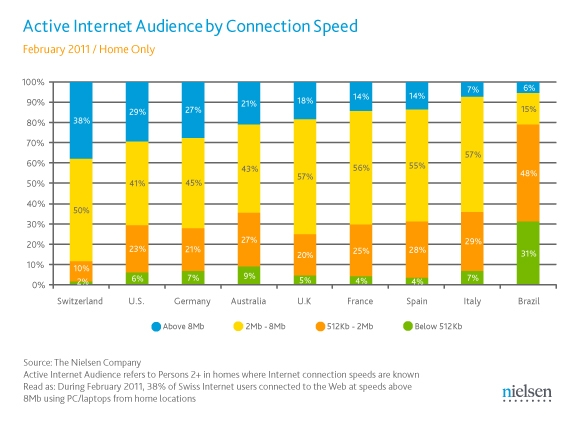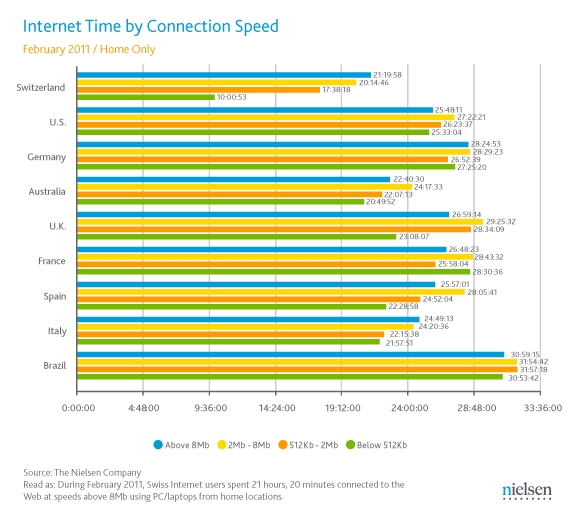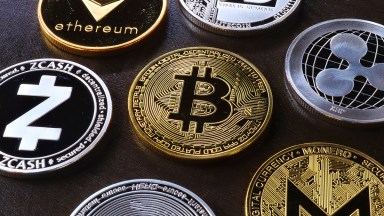The days of dial-up Internet access (speeds up to 128Kb) are numbered as consumers around the world opt for the fast and even super-fast Internet connections now available. The Nielsen Company recently measured and compared connection speeds on home computers during February 2011 across nine countries and analyzed whether speed affects the amount of time consumers spend online. The connection speeds were divided into four groups: ‘slow’ (up to 512Kb), ‘medium’ (512Kb – 2Mb), ‘fast’ (2Mb – 8Mb) and ‘super-fast’ (8Mb+).
In all but one of the nine countries measured, ‘fast’ is now the most common connection speed and only a small percentage of people are on ‘slow’ speeds. On average, across the nine countries, 19 percent of Internet users connect at ‘super-fast’ speeds, 47 percent at ‘fast’ speeds, 26 percent at ‘medium’ speeds and 8 percent are on ‘slow’ speeds. Only Brazil contradicts this trend with almost half (48%) of home Internet users on ‘medium’ connection speeds and almost one-third (31%) on ‘slow’ speeds.
Switzerland has, by far, the fastest-connected population, with 88 perecent of consumers online at home connecting at speeds greater than 2Mb – and 38% having a ‘super-fast’ 8Mb+ connection. Following Switzerland, the U.S. (29%) and Germany (27%) have the greatest concentration of people on ‘super-fast’ connections. In fact, all three countries now have more people connecting at ‘super-fast’ speeds than at ‘medium’ speeds (512Kb to 2Mb). Compared to the opposite end of the spectrum, Brazil has 8 times more Internet users on ‘medium’ speeds (48%) than on ‘super-fast’ speeds (6%).

So how does connection speed impact how much time people spend online – do higher speeds mean greater efficiency, therefore, less time online or does the higher quality experience encourage greater activity? The answer – there’s no single pattern across all the countries measured; however, those on the slowest speeds tend to spend the least time online at home. Only France and Germany negate the trend among the nine measured, and in six of the nine countries consumers using ‘fast’ (2Mb-8Mb) connections spend the most time online.
Switzerland shows the most linear pattern – the faster the speed the more time spent online – as people using a ‘super-fast’ connection (21 hours, 20 minutes) spend twice as much time online as people using a ‘slow’ connection (10 hours, 1 minute). Italy is the only other country that follows this linear pattern, but the differences in time are much less noticeable.
In fact, for all the countries except Switzerland, the absolute differences in time across the different speeds are generally not that large. Only in Australia, the UK and Spain do we see noticeable differences between those spending the least time online from home computers (people on ‘slow’ connections) and those spending the most time (the ‘fast’ connectors).




